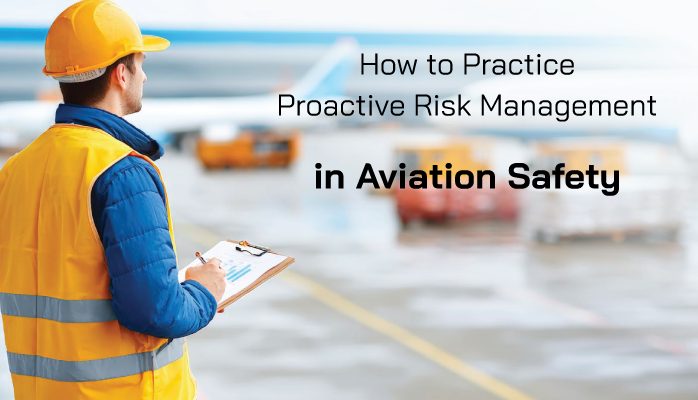What Is Proactive Risk Management

Proactive risk management is often esteemed as the “best” type of risk management. This is because proactive risk management usually matures later in SMS implementation. Also, it involves identifying and stopping issues before they occur.
Despite this, it’s important to understand that proactive risk management is not “better” than reactive or predictive risk management, it is just one necessary strategy for managing risk.
The primary goals of proactive risk management are:
- Identify behaviors that lead to hazard occurrence, and stop it before it happens;
- Identify root causes before they lead to hazard occurrence; and
- Understand the safety “inputs” of your program – i.e., underlying causes that lead to safety performance.
Being able to practice proactive risk management generally requires:
- A great deal of safety data;
- The ability to monitor complex safety metrics; and
- A mature safety culture.
Proactive risk management involves specific activities that are entirely different from reactive risk management activities. Both reactive and proactive risk management complement each other, and each strategy is useful in different situations.
When to Use Proactive Risk Management Strategies

Here are some good applications of proactive risk management:
- Identifying potential issues before hazard occurrence, be it in the operational environment or during other activities such as SMS audits;
- Identifying underlying behaviors, attitudes, and actions that directly correlate to safety performance; and
- Uncovering precursors to risk, such as the relationship between certain root causes and hazard occurrence.
Proactively managing risk is the responsibility of all employees in your company, including:
- Front line employees;
- Staff;
- Managers;
- Accountable executive.
Each sector of an organization has its own proactive behaviors that generate a solid, proactive culture in an aviation SMS program.
Related Articles on Proactive Risk Management in Aviation SMS
- The Secret Bias That Hurts Proactive Risk Management
- 4 Major Activities of Proactive Risk Management in Aviation SMS
- From Reactive to Proactive Risk Management in Aviation SMS
Proactive Risk Management for Front Line Employees
Front-line employees practice proactive risk management by identifying safety concerns before hazard occurrence. The steps are:
- Identify safety concern before it becomes dangerous (hazard occurrence);
- Report concern; and
- Mitigate concern.
Front-line employees best reach a state of proactive risk management via:
- Strong hazard identification training; and
- Good safety awareness.
Training employees extensively on hazard identification training, as well as, communicating thematic safety concerns and important safety information are both excellent ways to promote proactive risk management for them. Furthermore, proactive hazard identification happens via voluntary reporting, which is something you should obviously strongly encourage.
Proactive Risk Management for Managers

Safety managers practice proactive risk management differently than front-line employees. For safety managers, proactive often comes during “behind the desk” operations, such as:
- Identifying potential trends in safety data;
- Identifying highly correlative data during data mining;
- Creating emergency response plans and practicing emergency drills;
- Communicating important safety information on a regular basis;
- Conducting safety surveys; and
- Implementing risk controls before hazard occurrence.
Having good risk management tools is essential for safety managers to practice proactive risk management.
Proactive Risk Management for Accountable Executive
Accountable executives practice proactive risk management in one primary way: ensure that internal audits and inspections are being conducted. The accountable executive won’t actually be facilitating these audits, but as they are the person in the chart of budget, resources, and implementation, they should be the person coordinating SMS audits.
This can be as simple as:
- Ensuring that future audits are scheduled;
- Reviewing past audit findings and ensuring that they are corrected; and
- Ensuring that internal audits of the SMS are performed at least once per year.
If accountable executives recognize that any of the above points aren’t happening, they need to take measures to ensure that audits are scheduled and/or findings are corrected.
Last updated October 2025.







